If you didn’t know it by now, plastics have become a part of our lives, almost without exception. And I don’t even mean that we use things like plastic sunglasses or headphones, but that there are plastics in the things we eat and polluting nearly every place on the planet. Here are ten ways to go plastic-free or at least greatly reduce your own plastic waste. Plastic-free July is a great time to start making these changes!
To quote the Zero Waste Chef, Anne-Marie Bonneau: “We don’t need a handful of people doing zero waste perfectly. We need millions of people doing it imperfectly.”
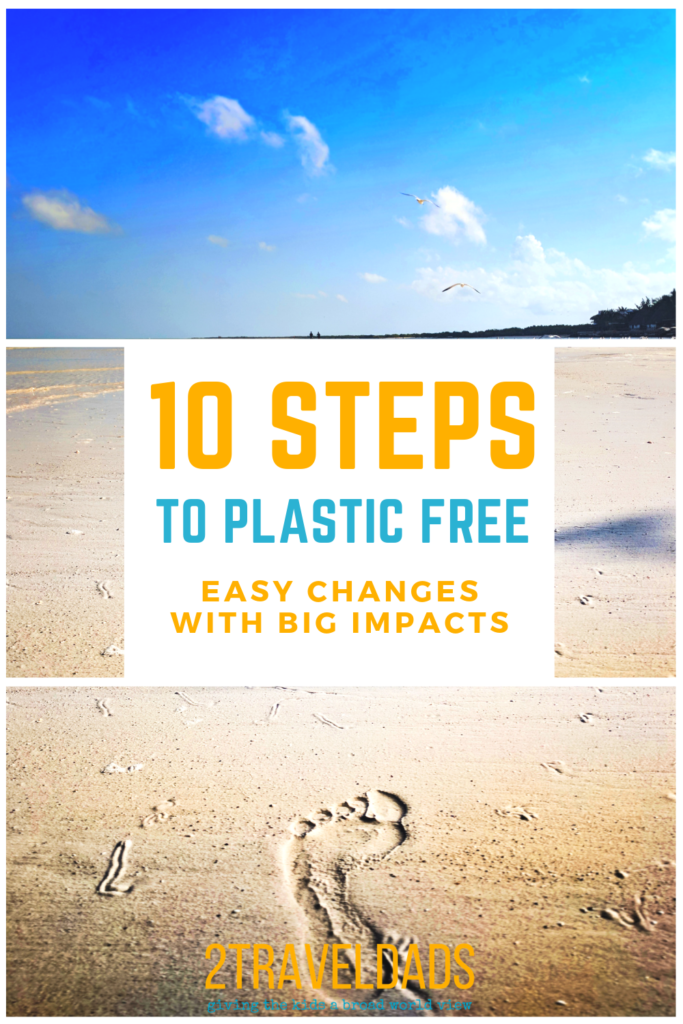
Why it’s Important to Go Plastic-free
There are three views on plastic use: “I can recycle almost everything, and I do so I’m doing my part;” “I will not buy anything new that uses plastics;” or “I don’t care because the earth is already being destroyed.” Which one are you?
We decided to go plastic free more than a year ago and it changed our lives. We had to completely change the way we grocery shop, change how we pack for travel and even consider ways to reuse otherwise disposable plastics already in our home. It was difficult to do, but more than a year later, we know that we’ve made the right choice.
We’ve been able to lower the amount of non-recycle trash from our home by 80%. That means that we’re not adding to a landfill or creating small bits of trash that work their way into nature. It also means that we’re making conscious choices to purchase products in bulk or sustainable packaging vs made from oil.
Between limiting the pollution we create and supporting the product sellers/manufactures that aren’t creating single-use plastics, going plastic free makes us feel like we’re starting to make a difference for the better.
Open admission: you’re probably thinking that we are hypocrites because we still drive cars and take flights. Please check out our article, Low Impact Tourism, to see how we minimize our impact with travel, including how to make flight and lodging choices that are eco-friendly or have the smallest impact.
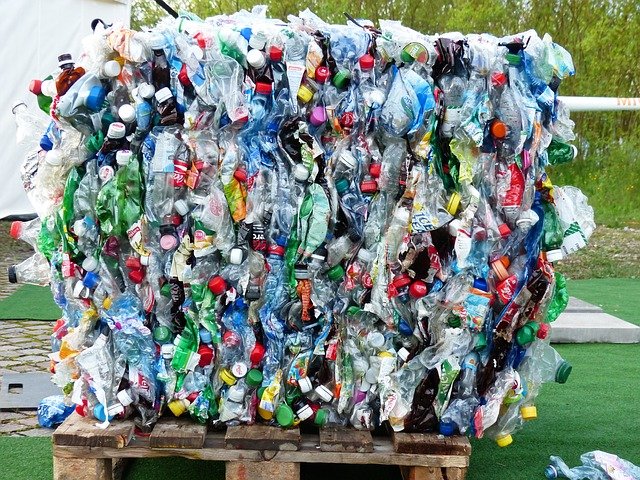
Surprising Ways You Use Plastic Every Day
Have you considered all of the single use plastics that you use every day? You will be surprised when you take stock of them. Some examples you might not even thing about, and why going plastic free is tough but worth it, include shopping bags, floss containers, candy wrappers, the little plastic seal around a bottle of anything, condiment packets, toothbrushes, feminine products, off-brand cotton swabs… The list goes on and on. And here’s a mind-blowing thought: diapers you wore as a baby are still around in a landfill somewhere.
Read about my wake-up call around blogging ethics and when I agreed to NOT talk about green diapering.
Also, think about when you’re not at home and you get take out. Did it come with plastic cutlery, a straw, a sealed condiment/napkin pack, a Styrofoam container and then wrapped in a bag? All of these things are waste that have made something convenient for you for a few minutes… and yet they’ll be around long after you’re dead.
Exercise: start your day trying not to touch anything that is a disposable plastic. See how long you can go without using a plastic that you’ll be throwing away (and that includes recycling)
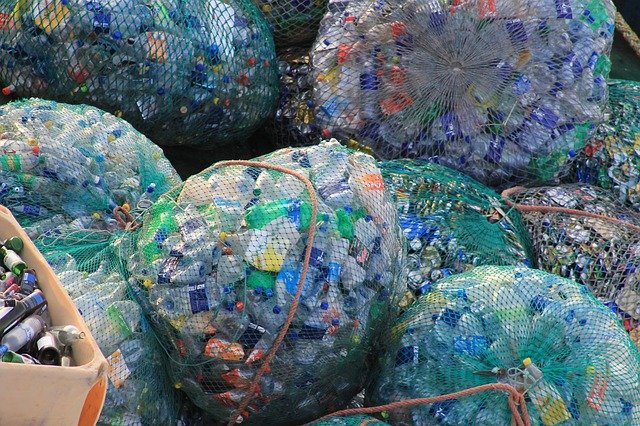
Where does plastic come from
I’m not a scientist, but burning plastic smells in a way that you know it’s not a natural product. DO NOT try burning plastic to test that, but it’s true, and in fact people all around the world have a horrible behavior of burning trash. True, the UK and other places have found a way to burn a lot of refuse to generate electricity, but dangerous plastics aren’t one of the substances they burn.
Plastic actually comes from oil or other natural substances that are extracted from the ground. Whether it’s from an oil well or fracking, oil is chemically treated and manipulated until it turns into a pliable material, and then from there is is further melted and treated until it becomes many of the products we use in everyday life… and that we throw away continually.
Yes, there are recycled plastics too, but only 20% of plastics used in the USA go into a recycle bin, and of those only 9% actually get recycled into another life as another product. Crazy to think how much waste humans create, and the lack of actual recycling is even more reason to consider going plastic free.

Where Does Plastic Go?
“But so many products today are made from recycled plastics, that’s good, right?” You’re correct in that many products are made from recycled goods, but there are so many more that aren’t, and each little plastic attachment and layer of packaging DOESN’T get recycled. Those small bits that are too tiny to be captured by recycling centers just sit somewhere, unaffected by time and weather.
There are some types of plastic today that are made from corn or algae and THOSE ROCK! In just weeks to months, those products break back down into compost and leave no footprint to the place they land.
Note: organic material plastics do not mean that they are okay to litter. You still need to respect the environment and keep it pretty by not throwing your waste everywhere.
The rest of the single use plastics that do actually get recycled have an uncertain journey ahead. Unfortunately, most plastic recycling is sent overseas for processing, often littering pieces into the ocean along the way. And that’s only if a waste management company has been able to find a buyer/processor to actually take the collected recyclables. In the meantime, millions of tons of recyclable plastics sit… waiting to be reclaimed… and not breaking down. 22 million tons of recycling is exported internationally every year, but even that doesn’t all get purchased by recycle processors and go through the full recycling process.
And that’s why going plastic free is so important!
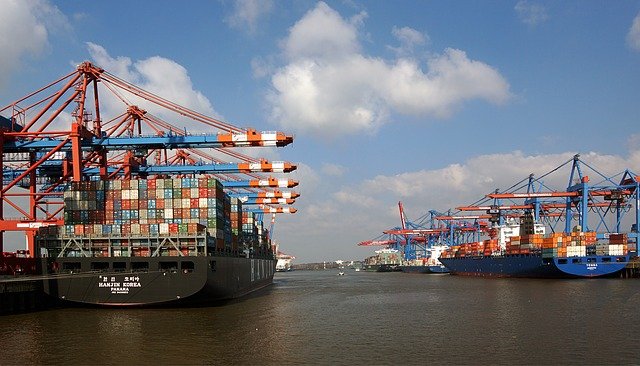
12 Ways to Start Going Plastic-free
There are many more ways to go plastic free and for each person, the opportunities to make changes in their behavior may vary, but these ten ideas are the easiest things an individual can do to limit their plastic consumption and start making a difference.
Bring Your Own Reusable Water Bottle
I’m starting here because this is the easiest step anyone can take. Really, does anybody have any reason to not always carry a reusable water bottle with them? No. Between free products provide at EVERY community event or intentionally buying a metal water bottle, everybody has one in some form. “It’s inconvenient to carry.” OMG, it’s not, and if you really think so, you need to get over yourself now.
And I’ll say, when I see somebody holding a plastic water bottle, I immediately judge them and give them a dirty look and they think twice about doing that again. Going plastic free means living with intention and either being better prepared or just learning how to manage yourself differently.
Note: there are very few manufactures in the USA that actually make water bottles from recycled metal. Liberty Bottleworks out of Washington State is one!!
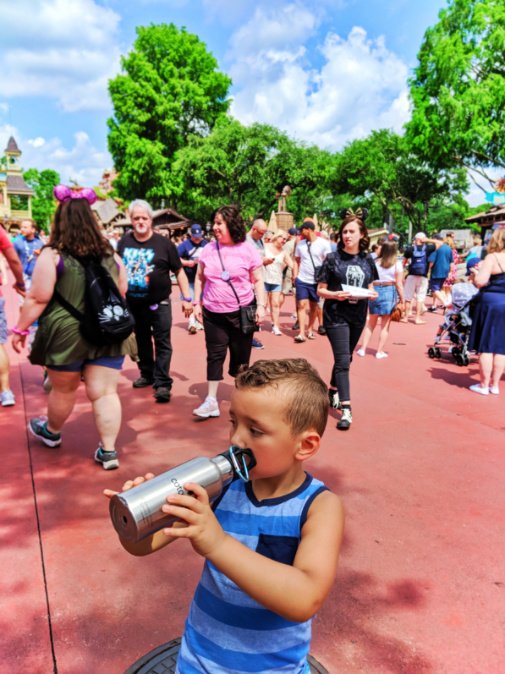
Bring Your Own Straws and Cutlery
Again, this is something that is really easy to change. We rarely do fast food or take out, but when we do, we have our bamboo forks and spoons at the ready. Also, we don’t often get beverages to go from Starbucks or anything, but when we do, we have straws at the ready.
“I don’t carry a purse. Where am I supposed to keep these?” If you are a person that often get take-away food or drinks, you can easily carry a collapsible or multi-use tool in your pocket or backpack. Or fanny pack (if you’re totally vintage).
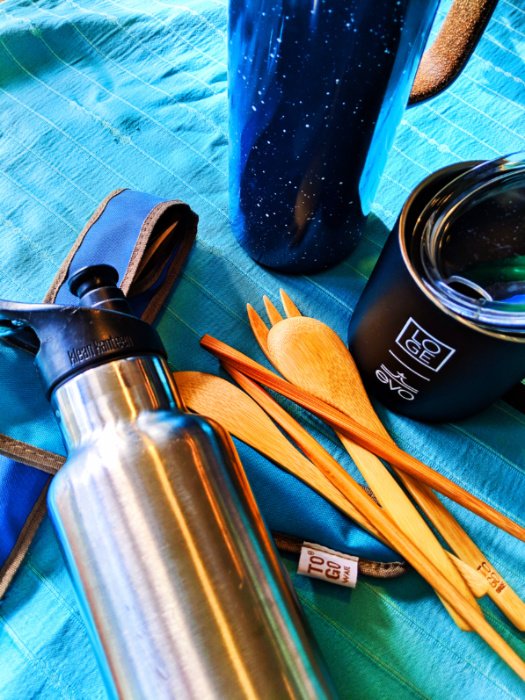
Make Thoughtful Grocery Shopping Choices
Going from the easy to the most difficult: don’t buy things packaged in plastic when you go grocery shopping. Going plastic free is most difficult when you consider food products in the USA and how you buy them. Here are some tips for how to make it easier to go grocery shopping plastic free:
- Bring your own SHOPPING BAGS
- Don’t put your PRODUCE IN INDIVIDUAL PLASTIC BAGS
- If you’re buying meat, get it from the meat counter and ASK TO BE WRAPPED IN ONLY PAPER
- If you’re going to the deli for foods to be put ONLY IN PAPER CONTAINERS
- Choose products WITHOUT VISIBLE PLASTIC packaging
- Consider if there is HIDDEN PLASTIC packing within boxes (example: cereal, mac’n’cheese…)
- Choose WINE OR BOTTLES OF BEER over cans of something
Here’s a fun “Did You Know”: did you know that many aluminum cans have a plastic lining on the inside of the can between the metal and the beverage? True story.
I know, this is difficult to do and you’ll discover that you end up giving up some of your favorite products, but is your desire to have chips greater than the need to ensure our kids have a nice planet to live on? I don’t think so.
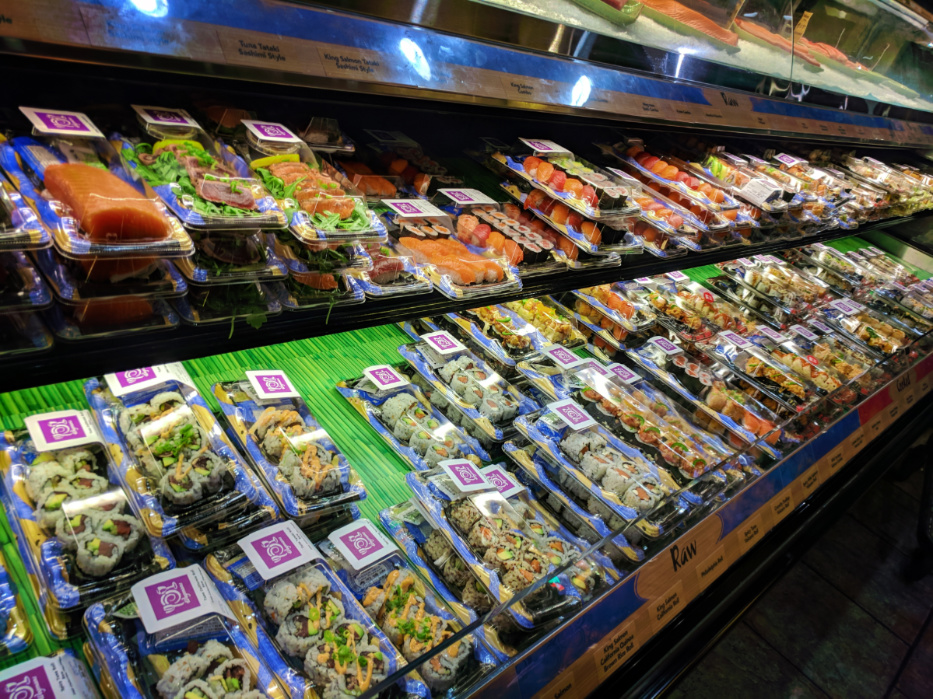
Learn to Make Daily Foods from Scratch
I know that time is important to everyone, but also it’s important to learn new skills to keep ourselves sharp. If you’re learning how to make daily foods from scratch, you’ll be surprised how easy it is to make foods that you love as a part of your everyday life. Going plastic free means you get to learn how to make pasta, bread and tortillas! Woo hoo for new life skills!!
Other great foods you can easily make at home include pickles, jam, whipped cream, ice cream, lemonade, apple sauce, and other things that you might think back to your grandparents making all the time. Did you know that not only are you creating less plastic waste by making these things yourself, but you’re, in many cases, also reducing the amount of food you throw away? Pickling, jamming and making juices is a great way to use up produce that’s at the end of its useable life.
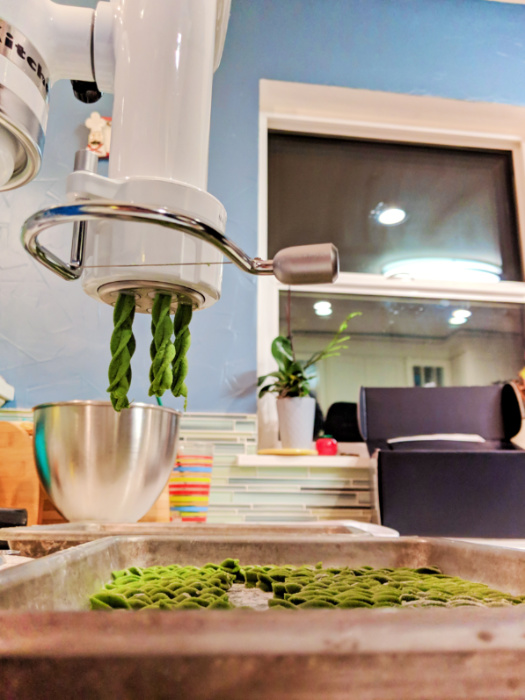
Substitute Plastic for Glass Storage
We were late to the game on going plastic free with food storage at home. Sometimes it’s just so easy to put something in a Ziploc bag instead of a container you’ll have to wash later. So what. Just do it.
Super easy tip: mason jars used for canning come in many sizes and are really easy to use in place of plastic bags or plastic containers.
Check out these great Zero Waste Products you can switch to! (Hannah is really smart about this stuff)
Also, with growing awareness of going plastic free, a lot of grocery stores are finding ways to accommodate customers bringing in their own containers to purchase bulk goods. If you’re ready to do that, ask at the customer service counter of your grocery store how best to do that.

Thrift For Sustainable Clothing Choices
Not everyone loves vintage clothes shopping or even the idea of thrift shopping, but it’s actually one of the easiest ways you can get new clothing with a low impact. Vintage clothing often is also made from natural fibers, or long lasting space-age fibers, so if you’re able to find gently-used clothes that you like, you’re actually making a green choice on many levels.
Buying used clothing says NOTHING about your social status and everything about you as a human.
- It says you see value in things after they’ve lost their shine.
- It says that you don’t need to spend a lot of money to look good.
- It says that you can look beyond a label or a storefront to find quality.
- It shows you have patience (cuz sometimes you really need to take your time to find the right stuff)
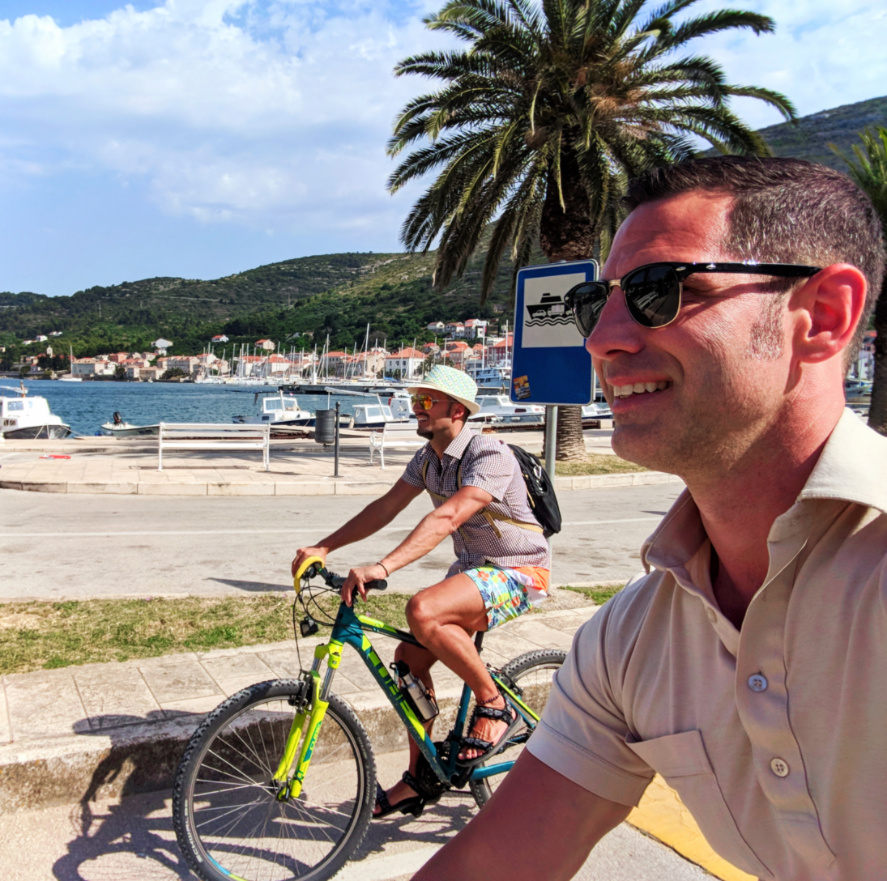
Purchase Fabric Products Made From Natural Fibers
WHAATTT? Yes, it’s true. So much of our clothing today is made of synthetic fabrics and blends (60%!!!). Simply put, when you wash clothes made of polyester or microfiber, tiny strands of plastics are washed into the sewer and many find their way into the ocean… and then into our foods.
Check out this article about beer containing plastics even!
If you consciously look at the labels of future clothing purchases, you can find lots of wonderful clothing pieces that are 100% cotton or wool. Even bamboo is an option.
The most comfortable pair of underwear I’ve ever had was 100% bamboo. I actually still have them and love them… and they are old underpants. And this is the most classy thing I’ve ever written.
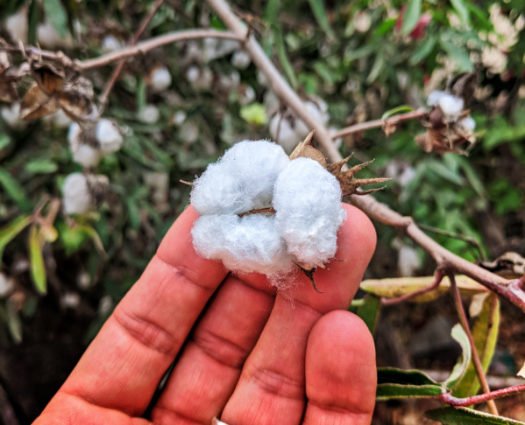
Don’t Use Fabric Softener
What do you think fabric softener is made from? That’s right. Another step to going plastic free is changing your laundry habits. Fabric softeners are often made from plastics and fats. Ideally, doing your laundry and then hanging it do dry is the most eco-friendly option, but if you don’t have the space or live in a rainy place, that may not be an option, so at least cutting a chemical and plastic additive from your process is a good option!
Other ways to make your laundry more soft or to catch some of the scents and fluff of doing laundry is to throw wool balls in to the dryer with clothes and things. This will help keep things from wrinkling AND you can add essential oils to the wool balls to give the subtlest hint of a scent.
Stop Buying/Accepting Crap You Don’t Need
That’s right: stop buying crap you don’t need or is going to break and be thrown away. This is a financial tip too: you’ll save money and waste less by purchasing higher quality products, including wooden products, that will last longer. I love watching my kids play with wooden toys from when I was little… in the meantime crappy plastic toys that have come into our house have had to be thrown away because they can’t be fixed or the kids have lost interest.
This is the same for cheap furniture. Investing in quality, even if you need to save for it, is better than wasting money and throwing away a broken piece of further sooner than later.
Also, if you like to get gifts for kids you know, you REALLY DON’T HAVE TO! Seriously, kids do love gifts, but bringing junk or short-lived toys is no service to any household and is not good for the environment. And who knows, maybe that family you want to give something to is going plastic free and you’re slowing their progress? Just sayin’…
Tip: small toys, games, and cheap stuffed animals are a big problem for America’s families. A lot of parents are too polite to say anything, but I would say that 95% of parents agree with me: our kids don’t need any more stuff. Spending time with them is way better!
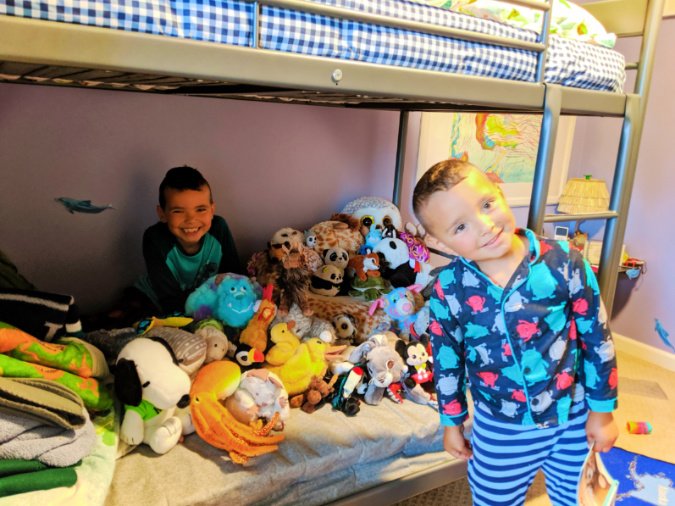
Support Your Local Farmers
I said above that part of going plastic free with grocery shopping is not using a bunch of individual plastic bags to package produce. Another think you can do beside stopping that habit is shopping via your local farmers. Take the time to visit your local weekly farmers market. Here you can support your neighbors, hand pick local produce (and put it in your own bag or basket), and limit the carbon footprint of transporting food products.
If you didn’t realize it before, local farms are all around us, in nearly every region, including NYC. Supporting local farmers is directly supporting the families your kids go to school with and helping to keep your hard earned money in your community versus giving it to mass farms, such as Monsanto.
Tip: when you’re at the farmers market, ask one of the local growers about joining a CSA, community supported agriculture. It’s a great way to consistently support locally AND you often end of with unique produce that inspires you to try new things.
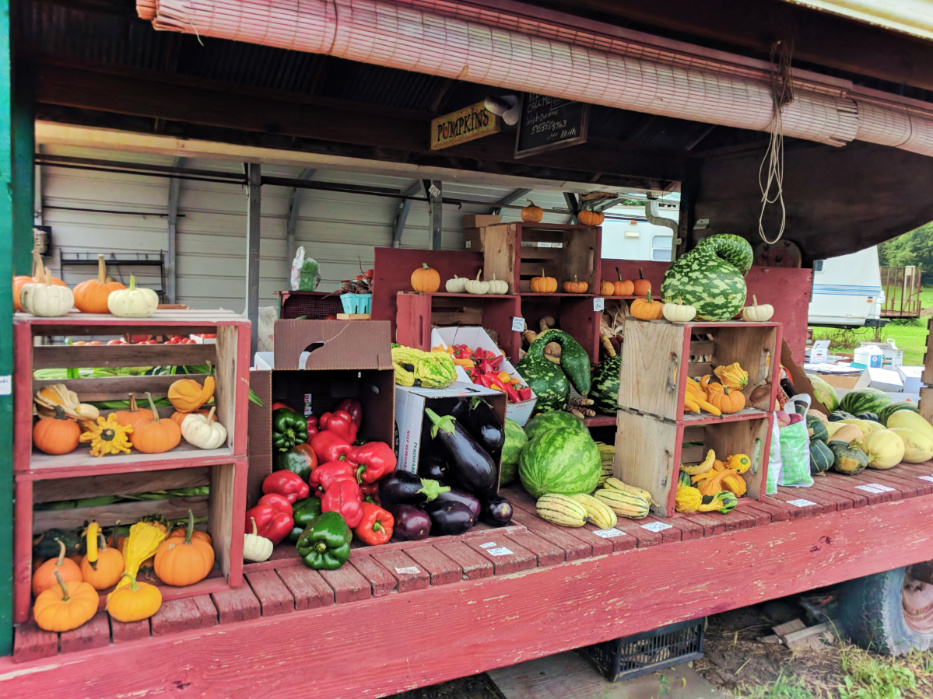
Strike Up Conversations About Going Plastic- free
I cannot stress enough how important talking to others about going plastic free is. Yes, it’s tough to do, but sharing the struggle with others is a great way to encourage them to take steps to lessen their plastic footprint, and you’ll also probably get some good advice for your own practices. Many people haven’t considered how they are a part of the problem with single use plastics and black-hole recycling. Being open about what you’re doing and sharing the struggle is an ideal way to create awareness.
And who knows, maybe somebody you chat with about going plastic free is actually a decision maker for a product or store. Perhaps you sharing what you’re doing daily or the difficulty you have with grocery shopping will inspire that person to work on taking steps within their own business.
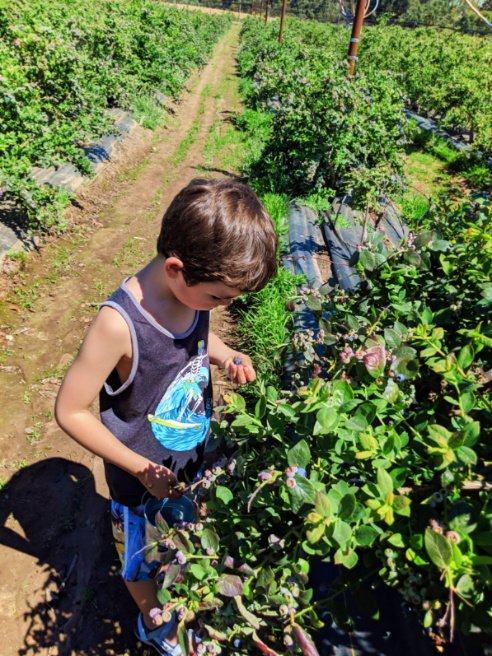
Reach Out to Brands and Manufacturers Re: Going Plastic-free
The written and spoken word is powerful, people. If you see a problem or an opportunity for things to be made better, say something! We purchase totally different grocery products and make very different travel decisions since we starting going plastic free and trying to be more eco-conscious in other areas. We’ve started trying brands that offer paper or bulk products over plastic packaged goods. Tell your old brands you miss them and what they can do to get back into your home!
@Juanita’s Tortilla chips, I’m looking at you: other brands package tortilla chips in paper, why can’t you?! We miss you so much, Juanita’s!!! Our lives haven’t been the same!!!
This goes for travel brands too. I reached out to Loews Hotels and provided them a detailed run-down of the ways they could go plastic free and provided solutions, and they dismissed it completely, discounting my suggestions as not being scale-able, and yet other multinational hotel brands have been able to implement them. Others though have heard the call and taken big steps to make a difference, including Best Western Hotels & Resorts and Intercontinental.
Saying something and providing a solution makes a difference!!

I hope you have some good inspiration and feel that you can start going plastic free with confidence. I’m not going to lie: it’s not easy and is truly frustrating and upsetting at times. Major changes need to be made by individuals and corporations, so feel good doing what you can to get you and your family on the right track. It takes time to go plastic free. And to re-quote the Zero Waste Chef: “We don’t need a handful of people doing zero waste perfectly. We need millions of people doing it imperfectly.”
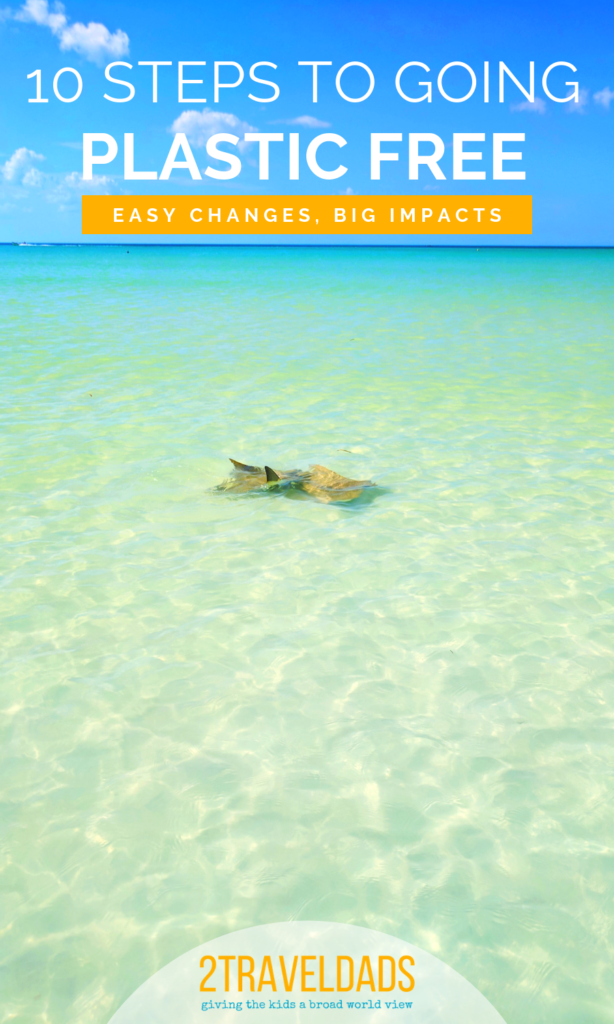
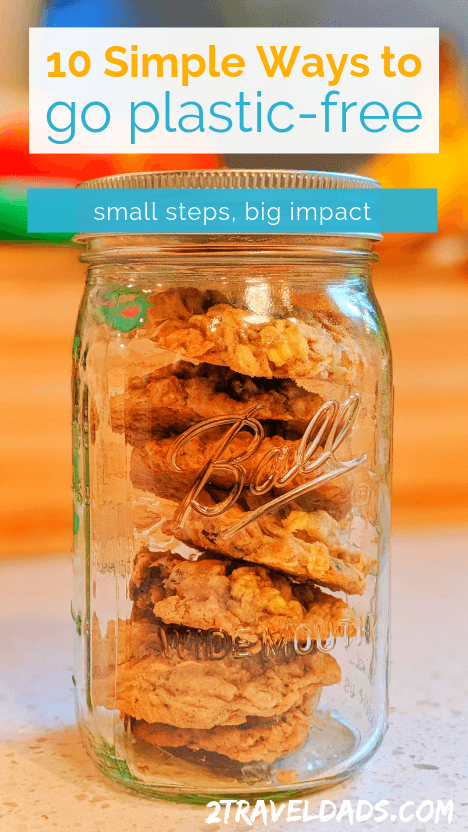
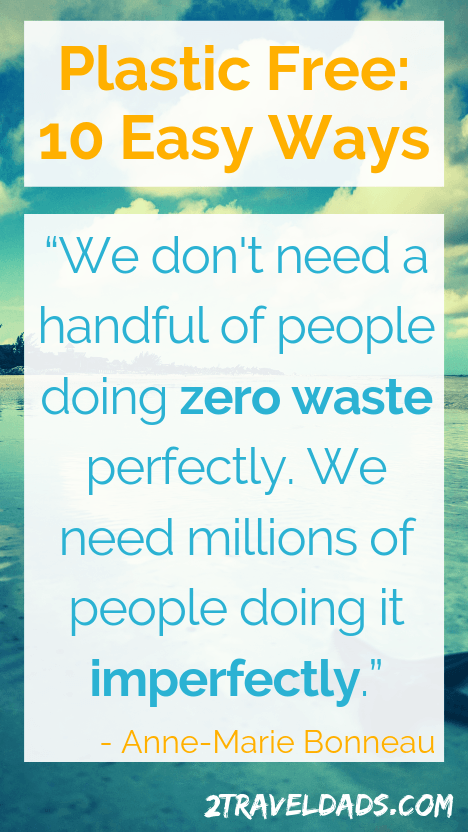



plastic free here i come
best website on going plastic free ever
Good job making this web
It helped my school’s project a lot